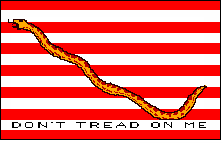Stuff
Some Stuff

New U.S. Army Vehicle
Supposed to be way tougher versus I.E.D.s

Ley Lines

U.S.S. George W. Bush CVN 77
The US Navy has taken its first step in the staged evolution of the projected new design CVNX carrier, awarding Newport News Shipbuilding (NNS) a .8 billion contract for the design and build of CVN 77, the 10th and last Nimitz-class aircraft carrier.
Due to enter service in 2008 as a replacement for the USS Kitty Hawk (CV 63), the as-yet unnamed CVN 77 is seen as the transition ship to the new CVNX class, introducing a new integrated warfare system, a redesigned island superstructure and improved machinery control and instrumentation. A manning reduction of 400-550 over the Nimitz baseline is envisaged as part of a drive to reduce total ownership costs. This is to be achieved through increased automation and reduced watchkeeping requirements.
CVN 77 marks the first time that NNS has been given full responsibility for development, procurement and integration of the carrier's warfare system, a task previously borne by the navy. NNS selected Lockheed Martin last year to perform the role of warfare system integrator after a nine-month competition with Raytheon.
The integrated warfare system on CVN 77 will incorporate new Multifunction Radar (MFR) and Volume Search Radar (VSR) systems, leveraging developments already under way for the DD 21 Zumwalt-class destroyer programme. Both the MFR and VSR will use flat plane antennas embedded into the island superstructure.
"CVN 77 will introduce key warfare improvements," said Rear Adm Roland Knapp, programme executive officer for aircraft carriers in the Naval Sea Systems Command.
"It will provide an open-architecture command, control, communications, computers and intelligence environment that will embrace new systems in a cost-efficient and easily adaptable manner. This architecture will enable the future carrier to become a key node in the network-centric battlespace."
Advanced fabrication for the ship began in July 1999, under an advanced planning contract awarded the previous year. NNS is itself instituting new business practices and processes for CVN 77 in an effort to improve construction efficiency over the longer term.
"Our programme objectives for the next class of carriers include reducing the total ownership cost of the ship, reducing crew requirements and improving certain operational capabilities," said NNS vice president of technology development and carrier fleet support Irwin Edenzon. "CVN 77 is both the last ship of the Nimitz-class and the first step in the evolutionary process of developing CVNX."
CVNX-1 is due to begin building in 2006 and will embody upgrades within the Nimitz hull, specifically a new nuclear propulsion plant, a new electrical plant and distribution system, and the installation of a new electromagnetic aircraft launching system. CVNX-1 is due for delivery in 2013, replacing the USS Enterprise (CVN 65).
CVNX-2 will commence construction in 2011 and its design will establish the basic configuration for the 10 follow-on carriers of the class.
It will introduce hull improvements (notably modular recon- figurable construction), a new flight deck design, an electromagnetic aircraft recovery system and incremental updates to the warfare system electronics.
CVNX-2 is planned to join the fleet in 2018 as a replacement for the USS John F Kennedy (CV 67).
Bulbous Bow USS George H.W. Bush (CVN 77) was the second Nimitz Class carrier to have the new bulbous bow design, and USS Ronald Reagan was the first. The lower portion of the new bow protrudes forward from the ship in a bubble shape. It adds buoyancy to the bow, reducing drag for better handling at sea and providing lift to the flight deck. Under the guidance of Siu Fung (2420), who worked at NAVSEA at the time, the Reagan’s bulbous bow was designed and tested at our West Bethesda site. It was model tested, under project manager Ken Forgach (5200), in the David Taylor Model Basin. The Reagan hull model (#5531), at 38 feet, was the largest model ever tested in the basin. “It was the largest model we could run in the basin without having severe blockage effects,” explained Bill Day (5200). This new bow may even be considered as a retrofit design change for all Nimitz Class carriers during refueling and overhaul. Displacement hulls push water aside as they move. The water that is pushed aside forms a wave that begins near the bow. The length of this wave is proportional to the speed of the hull through the water—the faster the hull moves, the longer the bow wave. At some speed, the length of the bow wave increases to the point that it matches the length of the hull, and the hull operates in the trough of the wave, with a peak near the bow and another peak near the stern. This speed is called the "hull speed" and it is approximately 1.34 times the square root of the waterline length of the hull. The purpose of bulbous bow is to change the nature of this bow wave to reduce the drag it induces on the hull The bulbous bow creates it's own wave that is farther forward and "out of phase" with the natural bow wave created by the hull, effectively subtracting from the normal bow wave and reducing it's drag-inducing effect. The green line represents the natural bow wave of the hull. The blue line represents the wave created by the protruding bulb. The red line is the sum of these two. The height of the bow wave is substantially reduced, which reduces the hull drag associated with the bow wave. This improves fuel economy, and increases range. Examples of reductions in power achieved by the addition of bulbous bows (bow bulbs) to hulls are numerous, and well documented. However, the integration of a small volume, near surface bow bulb into an combatant bow which houses a sonar dome, has only recently been developed. At model-scale, the bow bulb was shown to reduce power, in both calm and rough water, without adversely affecting other aspects of ship operations. Due to funding cut backs, the bow bulb has not yet been transitioned to sea. The technical work indicated that the bow bulb was a valid energy saving concept. Sonar domes have typically been fitted to the bows of combatants principally to house the sonar transducers. They are traditionally located below the baseline of the ship and consequently have only a small effect on wavemaking resistance. Studies as to the effects of sonar dome design have generally taken dome size and location into consideration. On the other hand, reductions in resistance achieved by the addition of a bulbous bow to a hullform are well documented. The reduction in drag is derived primarily by the lowering of wavemaking resistance through attenuation of the bow wave system of the ship, and to a lesser extent by the reduction of viscous resistance due to a smoothing of the flow around the forebody. Hydrodynamic principles dictate that a bow bulb can be optimized for a specific speed (or a small range of speeds). A bow bulb providing the greatest potential for reduced fuel consumption, is therefore a compromise on the optimization at any one speed. There are significant geometric differences between a sonar dome and a nabla type bulb. The location of the center of area near the free surface, and the reduced beam-to-height ratio, are in direct contrast to the geometry of the sonar dome. The original hydrodynamic optimization of the bow bulb concept concentrated on calm water power reduction. This was achieved through model experimentation, which defined the initial bulb volume, length, and longitudinal positioning. As with all ships, US Navy combatants operate in an environment of ocean waves. The design of a bulbous bow with regard to only calm water can result in unfavorable performance in rough water. In rough water, the body of the bulb is subjected to an alternating inflow velocity field, preventing the development of stable destructive wave interference. Yamato, lead ship of a class of two 65,000-ton (over 72,800-tons at full load) battleships, was built at Kure, Japan. She and her sister, Musashi were by far the largest battleships ever built, even exceeding in size and gun caliber (though not in weight of broadside) the U.S. Navy's abortive Montana class. Their nine 460mm (18.1-inch) main battery guns, which fired 1460kg (3200 pound) armor piercing shells, were the largest battleship guns ever to go to sea, and the two ships' scale of armor protection was also unsurpassed. Yamato's vast width posed a challenge: her designers had to come up with a hydrodynamic bow to help the ship cut through the water. They tested 50 different wax models and struck upon a bow shape that greatly reduced drag at the front of the ship. The bulbous bow, jutting out 10 feet, creates its own wave that cancels out another wave generated by the main part of the ship. Less hindered by wave resistance, Yamato could reach a top speed of nearly 28 knots (32 mph), extraordinary at the time for a ship of her size. In the 1990s the US Navy found that refitting a bulbous bow on a DDG-51 Class Destroyer results in tremendous fuel savings from reduced ship resistance. Although the original funding for this project was $3.4 million, savings for 50 ships in the DDG-51 Class are estimated at $200 million. The bulbous bow concept has been well received, and as a result of the great potential for cost savings, bow designs for future ships are being reexamined. The success of the bulbous bow retrofit has resulted in the Navy aggressively pursuing spin-off technologies with the potential for similar fuel savings

3

More #%$&*!?+% Politics
Time to pull out the Heavy Bombers
Ragheads need loving too, but they need a little thinkin' changin' for now.




